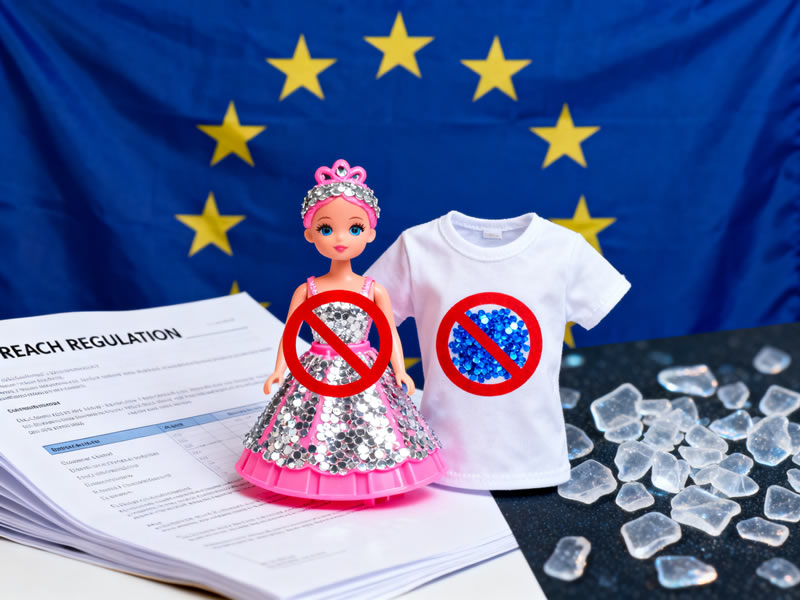On October 17, 2023, the European Commission announced its latest considerations regarding the scope of application of the microplastic restriction provisions (Annex XVII, Article 78 of the Regulation on Registration, Evaluation, Authorization and Restriction of Chemicals (REACH)). The core focus is on restrictions on intentionally added microplastics in products, with regulations related to plastic sequins becoming a key area of attention.
I. Core Ban: Restrictions on Microplastic Sales and Scope of Application
Starting from October 17, 2023, the EU has officially prohibited the marketing of specific microplastics, including plastic sequins (except biodegradable or dissolvable plastic sequins). The ban applies to the following scenarios:
II. Exemptions: Types of Microplastics/Sequins Not Subject to the Ban
Certain products or scenarios containing plastic sequins may be exempt from the above ban, which are specifically divided into the following two categories:
(I) Sequins in Specific Forms
Plastic sequins in the following states are not subject to the ban:
(II) Sequins as an Integral Part of an Item
When plastic sequins are attached to an item, it is necessary to determine whether they are an "integral part" of the item. The core criterion is "whether they fall off during normal use", with specific rules as follows:
III. Implementation Details and Key Points for Future Attention
(I) Current Implementation Notes
(II) Future Regulatory Developments
At the end of 2023, the European Commission will issue an official Q&A guide on this restriction, with two key contents requiring close attention:
IV. Core Compliance Requirements for Enterprises
For entities producing or selling sequined items, to ensure their products are not restricted, the core requirement is to: ensure that sequins are permanently attached to the product and do not fall off during normal use.

